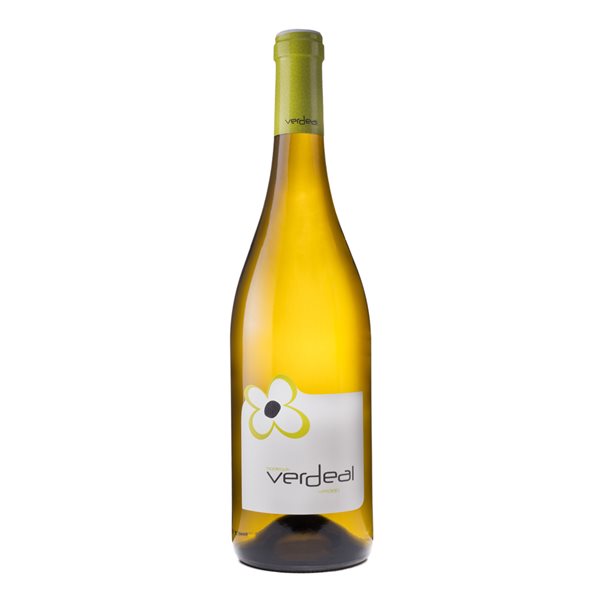My baskets
You still don't have anything in your shopping cart
My baskets
You still don't have anything in your shopping cart

{{getOldPrice()}}{{getPrice()}}
 ¡ Buying this product you get {{calculatedProductMenttos()}} menttos !
¡ Buying this product you get {{calculatedProductMenttos()}} menttos !


Casa Santoña offers authentic Cantabrian anchovies and other artisanal sea products.
With over three decades of experience, they are leaders in salting, smoking, and preserving sea products.
Their catalog includes sardines, tuna, razor clams, tuna belly, anchovies in vinegar, and smoked salmon.
Additionally, they have restaurants where they perfect recipes to offer the best selection to their customers.
100% Verdejo white wine with aging on lees, elegant and enveloping, with great freshness and fruity and mineral notes.
HARVEST
The 2024 harvest in La Seca was marked by a dry and mild winter that slightly advanced budbreak. Spring brought moderate rainfall that benefited the vineyard without compromising its health. The summer was warm and dry, with cool nights that favored slow and balanced ripening, key to preserving acidity and developing the aromatic profile of white varieties.
Harvest began in early September with careful selection, especially in the older plots. Verdejo stood out for its freshness, with aromas of white fruit, citrus, and fennel. In summary, 2024 has been a vintage with low yields but of great quality, offering vibrant, precise wines with excellent varietal expression.
The vineyards used in the production of this wine are over 30 years old, both in goblet and trellis, and rainfed. The production yields of our grapes in this harvest ranged from 6,000 to 4,500 kg/ha, resulting in a greater concentration of grape components and therefore higher wine quality.
PRODUCTION
The must is macerated with the skins for 6-12 hours at a temperature of 6-8ºC, for greater extraction of aromatic components and varietal character, as well as enhancing mouthfeel sensations. The settling process is long, increasing the contact of skin substances with the must, enhancing the contribution of fruity aromas. Fermentation takes place at low temperatures, 14-16ºC, helping to maintain and intensify the varietal character. After fermentation, the wines are kept for a period of time in contact with the fine lees, to increase the structural characteristics of the wine by providing fatty acids and broader, glyceric mouthfeel sensations.
TASTING NOTES
VISUAL PHASE: Pale straw color, with intense green hues. Bright and very well presented.
OLFACTORY PHASE: High intensity. Notes of fresh fruit (green apple), stone fruit (peach), and citrus nuances (grapefruit, lemon peel) dominate, highlighting its freshness, giving way to intense tones of mountain herbs and white flowers, with a delicate balsamic and mineral background and an aniseed finish.
GUSTATORY PHASE: Wide, elegant, and fresh mouthfeel, well-structured. Tasty and balanced. Complex, long, and very aromatic finish with pleasantly bitter tones that provide length and a finish with hints of fresh fruit, balsamic notes, and fennel.
ANALYSIS
Alcohol content: 13.5% vol
Total acidity: 5.65 g/l expressed as tartaric acid
pH: 3.26
Total sulfur dioxide: 97mg/l
Acetic acid: 0.32g/l
Reducing sugar: 2.8 g/l
100% Verdejo white wine with aging on lees, elegant and enveloping, with great freshness and fruity and mineral notes.
HARVEST
The 2024 harvest in La Seca was marked by a dry and mild winter that slightly advanced budbreak. Spring brought moderate rainfall that benefited the vineyard without compromising its health. The summer was warm and dry, with cool nights that favored slow and balanced ripening, key to preserving acidity and developing the aromatic profile of white varieties.
Harvest began in early September with careful selection, especially in the older plots. Verdejo stood out for its freshness, with aromas of white fruit, citrus, and fennel. In summary, 2024 has been a vintage with low yields but of great quality, offering vibrant, precise wines with excellent varietal expression.
The vineyards used in the production of this wine are over 30 years old, both in goblet and trellis, and rainfed. The production yields of our grapes in this harvest ranged from 6,000 to 4,500 kg/ha, resulting in a greater concentration of grape components and therefore higher wine quality.
PRODUCTION
The must is macerated with the skins for 6-12 hours at a temperature of 6-8ºC, for greater extraction of aromatic components and varietal character, as well as enhancing mouthfeel sensations. The settling process is long, increasing the contact of skin substances with the must, enhancing the contribution of fruity aromas. Fermentation takes place at low temperatures, 14-16ºC, helping to maintain and intensify the varietal character. After fermentation, the wines are kept for a period of time in contact with the fine lees, to increase the structural characteristics of the wine by providing fatty acids and broader, glyceric mouthfeel sensations.
TASTING NOTES
VISUAL PHASE: Pale straw color, with intense green hues. Bright and very well presented.
OLFACTORY PHASE: High intensity. Notes of fresh fruit (green apple), stone fruit (peach), and citrus nuances (grapefruit, lemon peel) dominate, highlighting its freshness, giving way to intense tones of mountain herbs and white flowers, with a delicate balsamic and mineral background and an aniseed finish.
GUSTATORY PHASE: Wide, elegant, and fresh mouthfeel, well-structured. Tasty and balanced. Complex, long, and very aromatic finish with pleasantly bitter tones that provide length and a finish with hints of fresh fruit, balsamic notes, and fennel.
ANALYSIS
Alcohol content: 13.5% vol
Total acidity: 5.65 g/l expressed as tartaric acid
pH: 3.26
Total sulfur dioxide: 97mg/l
Acetic acid: 0.32g/l
Reducing sugar: 2.8 g/l
